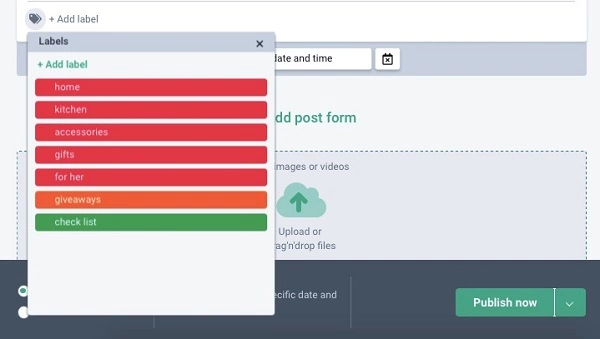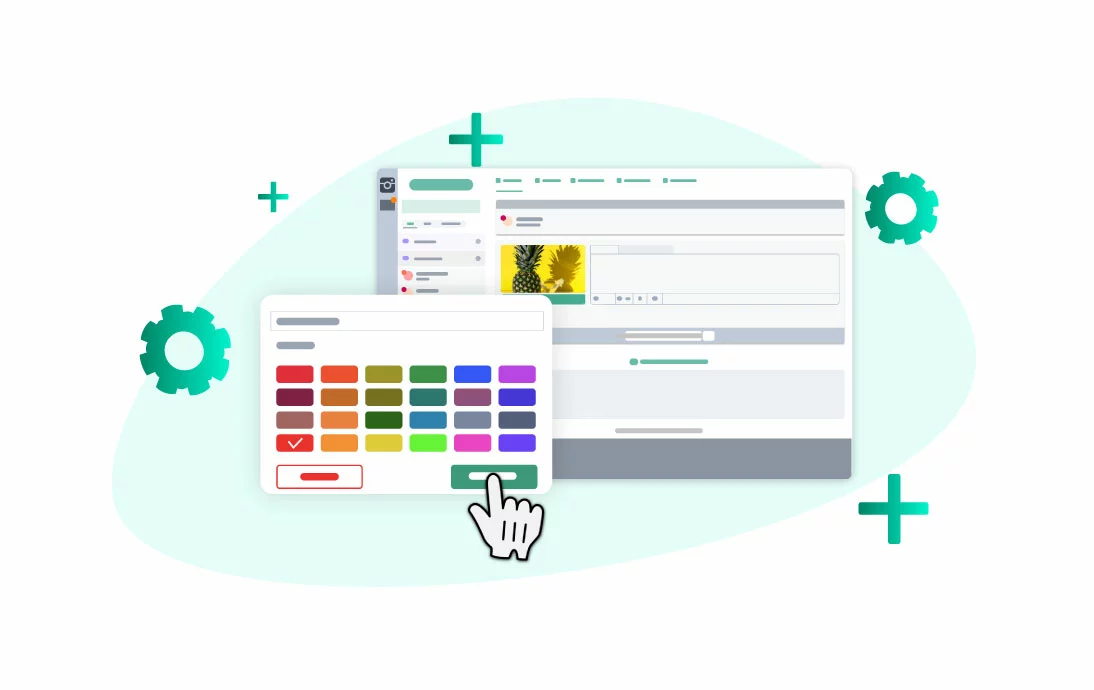A clear content plan convenient for the whole team (from the project CEO to the copywriter) is one of the components of an efficient SMM. We want to share five ways to simplify content strategy management and make it more effective.
Track the types of published materials
Traditionally, content marketing and SMM divide published materials by types: informational, selling, educational, and entertaining posts. Labels will help you visualize what daily, weekly, and monthly posts are.
Why track post types? To monitor the coverage, see which topics and formats are more popular with subscribers.
For example, analyze the engagement of selling posts, which often have nothing to do with the target audience’s interests. If this content type gets very few views, it’s time for an anti-crisis plan. Enable targeted advertising, review advertising budgets, and experiment with the framing.
Segment your audience
The chosen content strategy is designed usually for all portraits of the target audience: usually no more than 4-5. To manage the promotion channels, you will need a tool that allows tracking information with a breakdown by audience types.
How do I segment my audience using labels? Each target audience has its own problem that the product solves. Therefore, the posts shall address a specific audience and demonstrate the problem solution.
There are many segmentation options. Depending on business tasks, they will vary even within the same account.
For example, a company selling educational games for children shall test for which type of audience their new product can be a flagship one. To do this, the company tries different target audience types: ‘Moms, city million+, can afford a babysitter’ / ‘Moms, < million, average income’ and so on.
Label each type of target audience to track them and evaluate your output.
Label each product
When your company has several products or services, labels will be a great helper.
It will be easier to track and analyze each post on a particular product or service if it has its own label.
Companies most commonly focus on the best-selling product/services and add posts with new products.
Track advertising campaigns
It is most relevant for bloggers who publish ads in their accounts. We recommend labeling advertising posts, different advertisers, and internal tasks, according to the brief.
Published advertising content has various goals:
- promotion, where the key metric is the number of new subscribers;
- direct sales that you can track with a promo code;
- coverage, which means it is important that the post engages the audience, and motivates them to share.
By labeling each metric or goal, you can later use content tags for an ad report or to make a case for future advertisers.
Teamwork
Simplify the teamwork. Make the content strategy as transparent as possible and build a more manageable process. The head of the SMM department distributes the content plan topics for a month in the planner, writes the topic and the post key points, and marks the heading if any.
The marketer checks the content for the month and makes recommendations regarding selling posts. The copywriter works following the plan and writes the text directly in the planner, noting the status of the post: draft, commented post, final material, approved. The designers work in the same planner: they see the structure of the text and can immediately work on the illustration.
This structure saves time since you do not need to transfer texts from documents to the application, explaining the terms of reference to copywriters and designers. It is much easier to check the finished post with a picture since the final result is visible.
How to use labels in a monthly content strategy
Let’s analyze the above in specific business cases: how to build the process with labels.
It is an online decorative product store. The Instagram account’s goal is urging to purchase a product or service. The products fall into the following categories: ‘home’, ‘kitchen’, ‘accessories’, ‘gifts’, and ‘for her’. Some of the labels will correspond to things from these categories. Another direction is the publication of collections of goods and giveaways: we select a label for each category.

Each post is in the content plan: it is convenient to track the frequency of publications on a particular category of goods, analyze coverage, and check the followers’ engagement in giveaways.
The functionality of social networks is often not sufficient for the processes of large brands. When working with labels and other Onlypult features, all team members will see the content strategy and release content faster.






